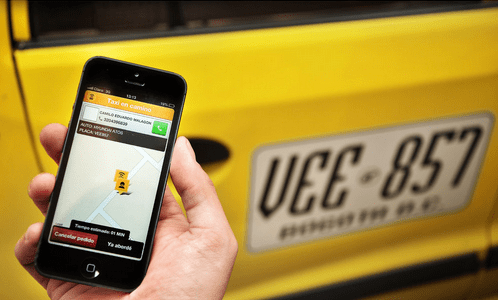Easy Taxi, the Uber and GrabTaxi rival backed by Rocket Internet and among other investors, has confirmed that it has exited Asia in order to focus on the ride on-demand market in its native South America.
The writing had been on the wall for some time, but now Easy Taxi has confirmed for the first time that it has pulled out of Asia. It isn’t a huge surprise since the company had steadily left key markets across the region and beyond during the past year or so. It exited India in December 2014, Taiwan in January, Hong Kong in February and Singapore in September, but had remained active in a few final countries in Southeast Asia and the wider Asian continent until recently.
At its peak, Easy Taxi covered 420 cities worldwide, including 20 locations in Asia and cities in parts of Africa and the Middle East.
Late last year it began to transition, however. The company let go of or relocated its remaining staff in Asia, but opted to leave its apps open in each market to allow any customers left to try to connect with any remaining drivers. It seems unlikely that many (if any) rides will happen though, since Uber and GrabTaxi are working hard and offer attractive incentives to snare both drivers and passengers. Few drivers or passengers would think to use an app with zero presence.
Easy Taxi, which started out in Brazil, raised more than $75 million from investors, including a $40 million Series D round in the summer of 2014. It soon became outgunned in Asia, however, when Uber began ratcheting its presence in India, where it is investing $1 billion, Korea, Japan and Southeast Asia, while local rivals Ola (India) and GrabTaxi (Southeast Asia) raised warchests of hundreds of millions of dollars each to turn their respective markets into two horse races against the U.S. giant.
While it got edged out in Asia, Easy Taxi is doubling down on Latin America, where it operates in 16 countries and covers more cities than Uber currently does.
“Easy Taxi is now focusing on Latin America — a region with significantly higher GMV and more favorable regulatory environment,” Paul Malicki, Easy Taxi global CMO, told TechCrunch via email.
“Combining Easy Taxi’s dominant position in the region and immense growth potential of the sector, we will continue to raise funding and invest it in LATAM to keep reshaping the industry and consolidate our position,” Malicki added.
Indeed, Easy Taxi merged with Colombian rival Tappsi in December to solidify its position. Malicki said that move has taken the combined companies to eight million rides per month and half a million drivers.
That’s more than Lyft, but a lot lower than Uber’s largest global rivals — China’s Didi Kuaidi does eight million daily rides and Ola does one million per day in India — but Easy Taxi is now focusing on a market where it is one of the bigger fishes. With Uber housing global ambitions, though, you wouldn’t bet that it will be too long before Easy Taxi is faced with another expensive war of attrition. It already appears to be hedging itself for that battle, one that perhaps it has a better of chance of competing in.
